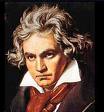(PLEASE NOTE THAT THIS IS THE LAST IN A 5 PART SERIES. I ENCOURAGE YOU START FROM THE BEGINNING...)
Questions for Further Exploration
If creativity implies deviation from norms, what is the nature of the reciprocal relationship between the behaviors of creative people and the reactions of society? How can the connection between creativity and mental illness be explained? Is it caused by neural pathways in the brain which affect both creative and mental functioning? What is the effect of hormonal imbalance on creativity? What is the effect of family systems on creativity and creative potential?
Several researchers describe the effect of gender identification and androgyny on creativity, stating that androgynous individuals have a higher tendency to be creative than traditionally male or female models. Are women really generally more creative than men? Has androgyny and creativity been researched and measured? If the foregoing is true, in what way are men and women creatively different? Are more creative women generally more susceptible to mental illness than men?
Crow (1997) suggests that perhaps mental illness is the price we pay for our complex brain functioning which, in turn, fosters creativity. If evolutionary development is responsible for humans to slip from creativity into mental illness, what is the mechanism responsible for this phenomenon? Can it be managed or turned off? And, if so, how? Why and when would we want to tone down creativity in favor of better mental health? Whose choice should it be? If there truly is a connection between creativity and mental illness, what kinds of mental illness have the highest connection with creativity?
When considering creativity in a biological, genetic sense, what is the role drugs/medication can play in managing mental illness in creative people? Do medications dull creative impulses, as many artists claim? Do drugs and alcohol enhance creativity, as many artists claim?
Conclusion
Undeniably, the comparison of creativity with madness has a long history. Perhaps, like myths, some truth in this belief exists. Despite research flaws, repeated connections between mental disorders and creative people are drawn and are difficult to ignore.
Creativity has been prized throughout history, though not always rewarded and cultivated. As with any issue in mental health, the issue of creativity is also extremely complex. Clear, broad, and universal definitions are needed to measure creativity in order to help determine the link between mental illness and creative individuals.
Counselors need to carefully assess all possible factors surrounding the life of highly creative clients and nurture their creativity to help them navigate an intricate and complicated world. The oxymoron in this suggestion is that, in treating creative clients, the nature of therapy encourages the client to look inward. However, as proposed in the Verhaeghen et al. study on rumination, it appears that in examining life too closely, clients and therapists may unwittingly be fostering depression and other mental illnesses. At any rate, addressing the issues of creative people certainly suggests that, in order for therapists to be highly effective much may be required of them. They need to be well trained in psychology, have wide creative interests, draw upon their own abilities for Janusian thought and ambiguity, and, especially, to be creative in their own therapeutic approach with clients, if they hope to make a positive difference in the lives of mentally ill creative people.
BELOW ARE PICTURES OF PEOPLE WHO HAVE BEEN DIAGNOSED WITH BI-POLAR DISORDER
***
***
VIVIEN LEIGH
ABBIE HOFFMAN
EDGAR ALLEN
GENE TIERNEY
BEETHOVEN
MEL GIBSON
OZZIE OSBOURNE
RICHARD DREYFUSS
TRACY ULLMAN










No comments:
Post a Comment